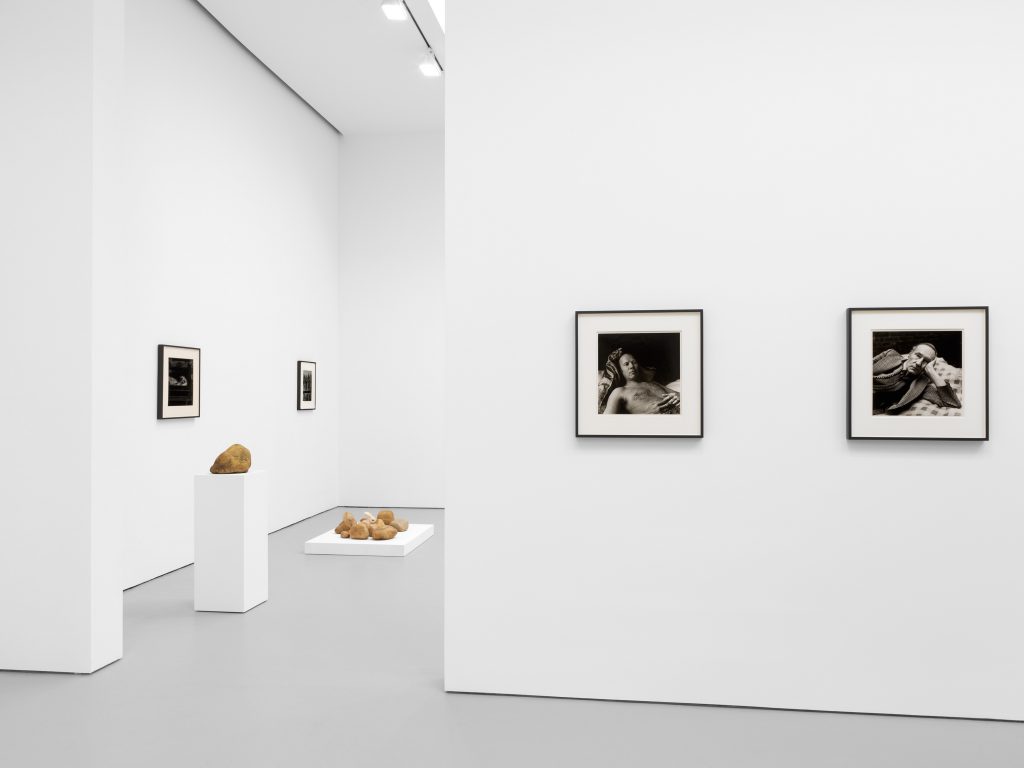David Zwirner Explores Artist Ray Johnson’s Queer Identity in “WHAT A DUMP”
Curator Jarrett Earnest presents a nuanced portrait of the obsessive mail art pioneer

American conceptual artist Ray Johnson pioneered the mail art movement from its inception in 1943, through its explosive critical reception in the ’60s, and until his death in 1995. Most people with an interest in contemporary art know this. With Ray Johnson: WHAT A DUMP, on now at David Zwirner, curator Jarrett Earnest sidesteps the textbook facets of the figure and explores his obsessions and queer identity. Through never-before-seen work, as well as archival material, Earnest presents Johnson’s art as a portrait of an artistic community and a collage of the culture he created within. It’s a transgressive show, and one worthy of the artist.

Earnest curated the Zwirner group show The Young and Evil in 2019 and in many ways, this is an extension of that. “An exhibition is a form of storytelling through objects and ephemera,” he tells us. “I asked myself, ‘How do you tell a story that isn’t about a single artist as a hero, but more about the complicated way that people are in friendships and relationships together as artists, and how does that create a culture?'” Both exhibits, he says, “are an archaeology of emotions to recreate these experiences. Johnson is a perfect vehicle for extending this excavation because he took his interactions with other people as an artistic material in and of itself.”
The show’s title acts as a microcosm of the curatorial mission. It references a Johnson collage found at the artist’s former home in Locust Valley, New York, which read “WHAT A DUMP.” This is, of course, a reference to the Elizabeth Taylor line from Who’s Afraid of Virginia Woolf, which in turn is a reference to Bette Davis in Beyond the Forest. The words operate in many ways here.

“The dump is all of the stuff,” Earnest says. “In Ray Johnson’s world there is so much stuff that at first glance it all looks like debris. It doesn’t make any sense. But it’s also a kind of coded subcultural reading around queerness. Gay men understand what ‘what a dump’ means. As a title, it captures something about this portrait of queer sensibilities.” Earnest is the first curator to frame a show around (or even embrace to this degree) Johnson’s queerness.
“For Ray Johnson, the queerness is structural in his body of work,” Earnest says. “There are memorials to Judy Garland and pictures of Liza Minnelli. It is a queer text. I didn’t have to make an argument for it, I just needed to let the work be available on its own terms.”

“When I started the process of putting together this show, I wanted to look for the weirdest stuff. The stuff that would surprise me about Ray Johnson,” Earnest says. “I felt like I had an idea of who he was, based on the documentary and the cultural saturation, and part of my point of view was wanting to know something different—wanting a different story. I went into the archive and asked, ‘What else is here?'” This led to a deep dive into fake fur and false eyelashes, leather straps, scatalogical curiosity and an abundance of Shelley Duvall and River Phoenix imagery.
“Very early on it became clear to me that what was interesting to me was the sense of obsession and I wanted to let the obsessions shape the show,” Earnest says. “Whenever I would see a lot of something—like Mae West, or Arthur Rimbaud and Gertrude Stein—I would pull out everything pertaining to that term. At one point I had a running list that I called The Obsession Index, and it was everything that he would return to over and over and over. These obsessions are the conceptual bones of the show.”

Central to the show is Johnson’s mail art network. “Johnson originated and formalized this practice of sending people collages on letters through the mail and that constituted the work of art itself. He always gave people instructions: either alter this and send it back to me or send it to someone else.” Thus the show isn’t only about Johnson, but also the way other artists responded to him and the way their work took on his themes both directly and indirectly. It’s an entire world of control and connection through art.
Within the exhibition, this includes items from the conceptual art group General Idea (and their mail art magazine called File) who often collaborated with Johnson. Earnest also layers in an homage to Johnson with work from the gay Fluxus artist Geoffrey Hendricks, who knew Johnson from the ’60s onward. Hendricks, on the one year anniversary of Johnson’s death, drove to the harbor where he died and collected stones from the beach. He used them to make memorial sculptures, which Earnest presents.

To accompany the exhibition, Earnest also penned a zine that incorporates an essay and supporting ephemera. It touches upon Johnson’s life as a queer person and includes stories of Johnson planning fetish bar nights for fellow gay artists, which progressed from The Eagle into the piers and ultimately to the sunrise. It paints a picture of the artist that we are seeing for the first time.
Ray Johnson: WHAT A DUMP is on now through 22 May at David Zwirner’s 525 West 19th Street location. Visits should be scheduled online in advance. Concurrent to the in-person show, David Zwirner is hosting the Ray Johnson: Five Decades exhibit online now.
Installation imagery courtesy of David Zwirner.












